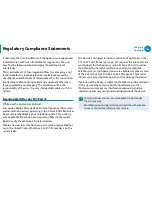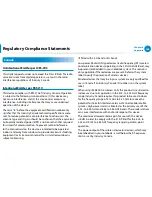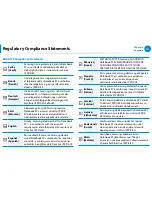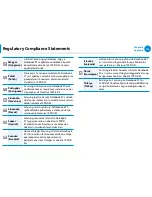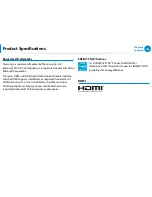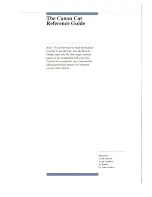
140
Chapter 6
Appendix
DVD
(Digital Versatile Disk)
DVD was developed to replace CD (compact disk). Although the
shape and size of the disc are the same as that of a CD, the capacity
of a DVD is at least 4.7GB while the capacity of a CD is 600MB. DVD
video is digital unlike VHS (analog) video and supports MPEG2
compression and digital audio. To play a DVD, a DVD drive is
required.
Firewall
A security system used to protect an internal network or intranet
from external networks through an authentication procedure.
HDMI
This is a digital video / audio interface specification that transmits
video and audio signals over a single cable.
Hibernation Mode
A power mode that saves all data in memory to the hard disk and
turns the CPU and hard disk off. When canceling Hibernation Mode,
all application programs that were running are restored to their last
state.
Icon
This refers to a small image that represents a file that users can use.
IEEE802.XX
This is a set fo specifications developed by the 802 committee of
IEEE for the LAN connection method called XX.
LAN
(Local Area Network)
A communications network connecting computers, printers and
other devices within a local area such as within a building. A LAN
enables all connected devices to interact with other devices on the
network. The current LAN uses the Ethernet media access control
method developed in the early 1980s. To connect to an Ethernet, a
network card called a LAN card, Ethernet card or network interface
card is required. To exchange data between computers, a protocol
is required besides the hardware equipment. Windows uses TCP/IP
as the default protocol.
LCD
(Liquid Crystal Display)
There are Passive Matrix and Active Matrix LCD types. This
computer uses the Active Matrix type LCD called a TFT LCD. Since
an LCD is implemented by transistors instead of a cathode-ray tube
unlike a CRT, its size can be slim. And because it does not blink, it
reduces eye strain.
Glossary
Summary of Contents for Personal Computer
Page 1: ...User Manual ...

